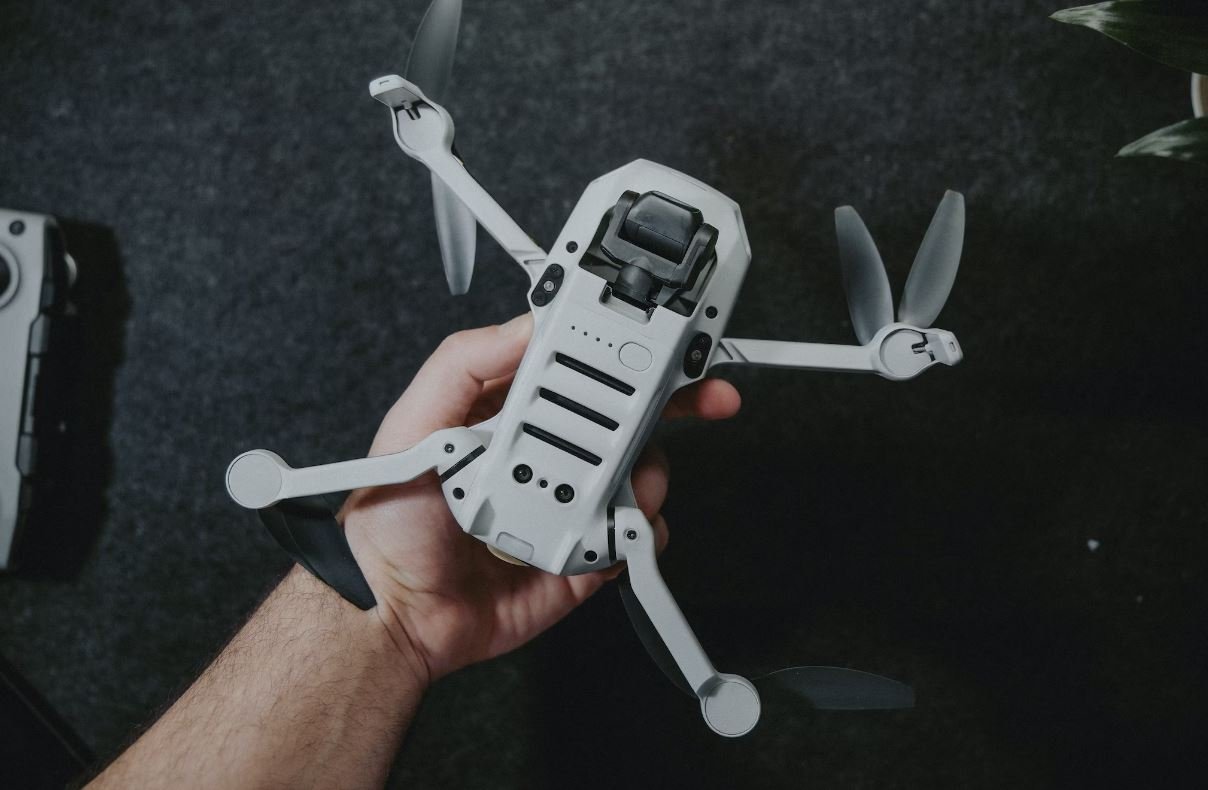AI in Video Surveillance
Artificial Intelligence (AI) has revolutionized various industries, and video surveillance is no exception. By combining advanced algorithms and computer vision, AI has enhanced the capabilities of traditional surveillance systems, making them more powerful and intelligent than ever before.
Key Takeaways
- AI improves surveillance accuracy and efficiency
- Real-time video analytics allow for proactive monitoring
- AI can automate event detection and reduce false alarms
- Deep learning enables advanced object recognition and tracking
- AI-powered surveillance enhances overall security
Traditional video surveillance systems rely on manual monitoring, which can be time-consuming and prone to human errors. With the integration of AI, these systems can now analyze vast amounts of video data in real-time and automatically detect and classify objects or events of interest, thus significantly improving accuracy and efficiency. *AI enables surveillance systems to process and analyze data faster than ever before, minimizing response time.*
AI-Powered Video Analytics
One of the major advantages of AI in video surveillance is its ability to perform real-time video analytics. By continuously analyzing live footage, AI algorithms can detect anomalies or suspicious activities instantly, allowing security personnel to take immediate action. *This proactive monitoring approach helps prevent incidents before they occur.* Additionally, AI enables automatic identification and tracking of objects, making it easier to monitor specific areas or individuals of interest.
Automated Event Detection
Through the use of AI, surveillance systems can automate event detection, reducing the need for manual monitoring. AI algorithms can be trained to recognize specific events, such as unauthorized access, object removal, or crowd gathering, and trigger alerts or notifications when such events occur. *This automation streamlines the monitoring process, ensuring quick and accurate response to security threats.*
Deep Learning for Object Recognition
Deep learning, a subset of AI, has greatly enhanced object recognition and tracking capabilities in video surveillance systems. Through convolutional neural networks (CNNs) and other deep learning techniques, surveillance cameras can now identify and track objects with remarkable accuracy. *This advanced level of object recognition allows for more precise monitoring and identification of potential security risks.*
The Overall Impact on Security
AI-powered video surveillance has a profound impact on overall security. The integration of AI algorithms and video analytics significantly improves the effectiveness of surveillance systems by minimizing false alarms and human errors. Additionally, AI enables intelligent search and analysis, making it easier to extract useful information from large amounts of video footage. *This holistic approach to security ensures better protection against potential threats and enhances situational awareness.*
Data Privacy and Ethical Considerations
As AI in video surveillance becomes more prevalent, it is crucial to address data privacy and ethical concerns. Strict data protection measures should be put in place to ensure the secure handling and storage of video data. Additionally, transparent policies and guidelines must be established to define the appropriate use of AI in surveillance, protecting privacy rights without compromising security.
Conclusion
In summary, AI has transformed video surveillance by leveraging advanced algorithms and computer vision. The integration of AI in surveillance systems enhances accuracy, efficiency, and overall security. Real-time video analytics, automated event detection, and deep learning for object recognition are just a few of the many capabilities that AI brings to video surveillance. As technology continues to advance, the impact of AI in security is expected to grow even further, safeguarding our communities and assets.
| Key Benefits of AI in Video Surveillance | |
|---|---|
| Improved surveillance accuracy | Reduction in false alarms |
| Efficient processing of video data | Advanced object recognition and tracking |
| Real-time monitoring and proactive alerts | Enhanced overall security |
| AI Applications in Video Surveillance | Benefits |
|---|---|
| Automated event detection | Reduces the need for manual monitoring |
| Object recognition and tracking | Identifies and monitors specific objects of interest |
| Behavior analysis | Detects unusual or suspicious activities |
| Data Privacy and Ethical Considerations |
|---|
| Secure handling and storage of video data |
| Establishment of transparent policies and guidelines |

Common Misconceptions
Misconception 1: AI in Video Surveillance is Invasive
One common misconception about AI in video surveillance is that it is invasive and infringes on people’s privacy. However, this is not necessarily the case. AI technology can be used to enhance video surveillance systems in a way that respects privacy rights. For example:
- AI algorithms can be trained to recognize specific behaviors or objects without needing to identify individuals.
- Video footage can be anonymized to protect the identities of people captured on camera.
- AI can be used to differentiate between normal and suspicious activities, rather than constantly monitoring individuals.
Misconception 2: AI in Video Surveillance is Error-Free
Another common misconception is that AI in video surveillance is error-free and infallible. However, like any technology, AI algorithms are not perfect and can make mistakes. It is important to understand the limitations of AI in video surveillance, such as:
- AI may struggle to accurately analyze crowded or complex scenes.
- Unusual lighting conditions or adverse weather can affect the accuracy of AI-based video analytics.
- False positives or false negatives can occur, leading to unnecessary alerts or missed detections.
Misconception 3: AI in Video Surveillance Replaces Human Operators
Some people believe that AI in video surveillance will completely replace the need for human operators. However, this is not entirely true. While AI can automate certain tasks and improve efficiency, human operators still play a crucial role in video surveillance systems. Here are a few reasons why:
- Human judgment and decision-making are valuable in complex situations that require contextual understanding.
- Human operators can validate and interpret AI-generated alerts for more accurate responses.
- AI technology may still require human intervention for fine-tuning and continuous improvement.
Misconception 4: AI in Video Surveillance is Cost-Prohibitive
Many people assume that AI in video surveillance is prohibitively expensive, making it inaccessible for smaller businesses or organizations. However, the cost of AI technologies has been decreasing over time, making it more affordable. Additionally:
- AI-powered video analytics can help reduce operational costs by automating tasks that would otherwise require manual effort.
- AI can optimize the allocation of resources, such as cameras and storage, leading to cost savings.
- There are various budget-friendly options available in the market, including cloud-based AI services that require minimal upfront investment.
Misconception 5: AI in Video Surveillance is Perfectly Accurate
Lastly, many people assume that AI in video surveillance can provide perfect accuracy in identifying and detecting objects or behaviors. However, it is important to recognize that AI algorithms have their limitations and can encounter challenges such as:
- Ambiguities in certain situations that may lead to misinterpretation.
- System performance degradation over time if not regularly updated and maintained.
- Potential biases in AI algorithms that can result in false identifications or inappropriate profiling.

Advantages of AI in Video Surveillance
Artificial intelligence (AI) has revolutionized the field of video surveillance, enhancing security measures and improving overall safety. This article highlights ten key points that showcase the incredible impact of AI in video surveillance.
1. Reduction in False Alarms
AI-powered video surveillance systems can significantly reduce false alarms, ensuring that security personnel focus on genuine threats. By analyzing footage in real-time, AI algorithms distinguish between normal activities and suspicious behavior, minimizing unnecessary interruptions.
2. Behavioral Analysis
AI enables advanced behavioral analysis for tracking unusual or suspicious activities. Through machine learning algorithms, video surveillance systems can identify patterns and trigger alerts for potential threats, such as loitering or unusual movement in restricted areas.
3. Facial Recognition
With AI-driven facial recognition technology, video surveillance systems can identify individuals in real-time, helping in the detection of criminals, wanted persons, or unauthorized personnel. This enhances security protocols and aids law enforcement agencies in their investigative efforts.
4. Object Detection and Tracking
AI allows for precise object detection and tracking in video footage, even in challenging conditions. This capability assists in locating lost items, tracking suspicious packages, or identifying potentially dangerous objects, thus mitigating potential threats.
5. Real-time Alerts
AI-powered surveillance systems generate real-time alerts when suspicious activities, unauthorized access, or potential security breaches are detected. This instant notification empowers security personnel to respond promptly, minimizing risks associated with delayed response times.
6. Video Analytics
The integration of AI with video surveillance enables advanced video analytics. These sophisticated analytics can count individuals, estimate crowd sizes, detect traffic congestion, or identify bottlenecks in public spaces, facilitating efficient resource allocation and crowd management.
7. Predictive Analytics
AI algorithms can analyze historical data to make predictions about future events, such as identifying high-risk areas or predicting potential security threats. By analyzing patterns, surveillance systems can proactively respond to prevent incidents before they occur.
8. Automated Tracking and Alerts
AI-powered tracking and alerts automate surveillance processes, eliminating the need for continuous manual monitoring. By autonomously tracking objects or individuals, the system generates alerts when predefined criteria are met, thus enhancing productivity and reducing human error.
9. Facial Mask Detection
With the rise of COVID-19, AI-based facial mask detection has become crucial for maintaining public health and safety. Video surveillance with AI capabilities can identify individuals not wearing masks, triggering alerts or enabling appropriate interventions to enforce mask mandates.
10. Integration with Other Technologies
AI seamlessly integrates with other technologies, such as access control systems and video management software. This integration enhances the overall security ecosystem by providing a comprehensive solution that combines multiple features and enables efficient management of surveillance data.
Conclusion
AI has brought immense advancements to video surveillance, revolutionizing security measures and safeguarding public spaces. From reducing false alarms to automating tracking and analysis, AI-powered systems enhance the overall efficiency and effectiveness of video surveillance, making our communities safer and more secure.
Frequently Asked Questions
What is AI in video surveillance?
AI in video surveillance refers to the utilization of artificial intelligence technologies and algorithms to enhance the capabilities of video surveillance systems. These systems can automatically analyze, interpret, and understand visual data captured by surveillance cameras, enabling more advanced and proactive security measures.
How does AI enhance video surveillance?
AI enhances video surveillance by enabling advanced video analytics and real-time monitoring. It can detect and track objects of interest, identify suspicious or abnormal behaviors, recognize faces and license plates, and provide intelligent alerts and notifications. AI also improves video search and retrieval by automatically indexing and categorizing video footage.
What are the benefits of AI in video surveillance?
The benefits of AI in video surveillance include improved security and safety, increased operational efficiency, reduced human error, and enhanced decision-making capabilities. AI-powered systems can quickly and accurately analyze large amounts of video data, enabling faster responses to potential threats and ultimately helping to prevent incidents.
What technologies are used in AI video surveillance?
AI video surveillance systems generally use a combination of computer vision, machine learning, deep learning, and neural networks. Computer vision enables the recognition and understanding of visual data, while machine learning and deep learning algorithms facilitate the training and optimization of AI models for specific surveillance tasks.
Are AI video surveillance systems capable of facial recognition?
Yes, AI video surveillance systems can perform facial recognition. By analyzing facial features and comparing them to a database of known individuals, these systems can identify and match faces in real-time. Facial recognition technology can be used for purposes such as access control, criminal identification, and VIP recognition.
How accurate is AI facial recognition in video surveillance?
The accuracy of AI facial recognition in video surveillance systems can vary depending on various factors, including the quality of the camera, the lighting conditions, and the quality and size of the reference database. Advanced AI algorithms can achieve high accuracy rates, but it is important to regularly test and calibrate the system to optimize performance.
What privacy concerns are associated with AI video surveillance?
AI video surveillance raises privacy concerns due to the potential for invasive monitoring and the collection of personal data. To address these concerns, privacy regulations and policies should be implemented, such as video anonymization techniques, strict access control, and transparent disclosure of surveillance practices.
Can AI video surveillance systems integrate with existing security infrastructure?
Yes, AI video surveillance systems can integrate with existing security infrastructure. They can be connected to existing surveillance cameras, recorders, and management systems, enhancing their capabilities with AI-powered analytics. Integration may require the use of compatible protocols and APIs for seamless data exchange between different systems.
Is AI video surveillance limited to just security applications?
No, AI video surveillance has applications beyond security. It can be utilized in various industries such as retail, transportation, manufacturing, and smart cities. For example, AI can help optimize retail store layouts, monitor traffic flow, identify production line anomalies, and enhance urban planning by analyzing crowd behavior.




